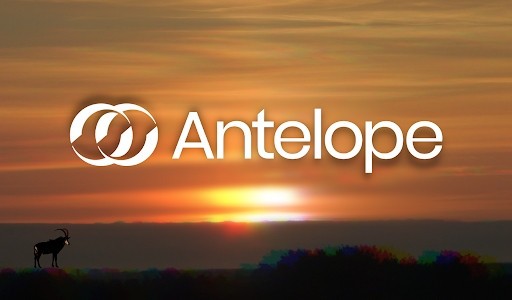With Antelope Protocol Release, The EOSIO Blockchain Is Reborn

The EOS Network Foundation has kicked off a new era by forking the underlying software for EOSIO blockchains to Antelope, a new, community-run blockchain protocol that has been rebuilt with the full support of the ENF’s most important members.
The shift to Antelope marks a new chapter in EOSIO’s long-running saga. Unlike most other well-known decentralized networks like Ethereum, Polkadot and Avalanche, EOSIO isn’t a blockchain itself. Rather, it is an open-source software protocol that’s used to build multiple blockchain networks that support high-performance, decentralized applications. Some of the best known blockchains built on EOSIO include EOS itself, Telos, Wax and UX Network.
First created by the developer Block One in 2018, EOSIO provides a way for developers to rapidly set up a blockchain for dApps by simulating a machine plus the compute, networking and RAM resources they require. It also provides a wide array of tools and protocols for establishing security and permissions for specific blockchain networks.
When it first launched in 2018, big things were expected of EOSIO. Due to its revolutionary design and consensus mechanism, it’s able to handle many times more transactions per second and do so with much lower fees than other networks. It was billed as the perfect tonic to the network congestion and high gas fees plaguing the Ethereum network, and such were the expectations that it raised a stunning USD 4.2 billion in what remains, to this day, the largest-ever Initial Coin Offering in the blockchain industry.
Development Roadblock
For a variety of reasons, EOSIO failed to build on that early success. Instead, the massive ICO raise was followed by years of disappointment, with the project missing a series of milestones on its roadmap. With constant upheavals at Block One leading to most of its best talent leaving the firm, development of the EOSIO protocol had virtually ground to a halt by mid-2021 and the project had become one of the laughing stocks of the crypto space.
The failure of Block One to build on EOSIO’s potential ultimately triggered an unprecedented community revolt, with die-hard believers in the project refusing to give up on their dream. Angered by Block One’s inaction, the community formed a new, decentralized autonomous organization called the EOS Network Foundation (ENF), led by its CEO and Executive Director Yves La Rose. With the future of the network seemingly in jeopardy, the project took its first steps towards independence when block producers agreed to fund the ENF and allow it to redirect resources back to network development.
Having wrestled control of the project away from Block One, the ENF set about breathing new life into EOSIO by establishing various working groups to come up with a revival plan. These working groups were funded by the ENF and produced a series of Blue Papers that outlined ways to improve the network, together with specific recommendations to make these changes. For instance the EOSIO+ working group came up with proposals to better coordinate the efforts of all EOSIO blockchains, with a view to preserving and advancing the underlying codebase they all shared.
At the same time, the ENF hired a team of developers to create an independent, community-led fork of EOSIO under the codename “Mandel”. The initiative was later taken over by the ENF’s engineering team, which introduced a number of new features and improvements to the protocol and set about trying to reach a community consensus on the upgraded network. This led to the creation of the Manel Upgrade Launch Group, which began to coordinate these efforts. Meanwhile, the EOSIO+ working group successfully forged a coalition made up of EOS, Telos, Wax and UX Network.
Fast-forward to April 2022 and the coalition voted unanimously to pool its resources and work on implementing the Mandel upgrade.
Antelope: A New Protocol Is Born
The culmination of these efforts saw the ENF announce the official launch of Mandel, now branded as “Antelope”, after successfully forking from EOSIO 2.0 in August.
ENF heralded the launch as a “leap for freedom”, saying it marks a completely new era for EOSIO. This is not an understatement. The release of Antelope is a major milestone that underscores the newfound independence and freedom of EOSIO, its ecosystem and its strong leadership under the ENF and its coalition members, EOS, Telos, Wax and UX Network.
Much more than just a rebrand, Antelope represents a significant evolution of the EOSIO protocol. Not only has the project been renamed, but it has also gained significant new functionality.
New features include Action Return Values, the ability to retrieve from within smart contracts the current block number, and also the ability to estimate the resource consumption of any code deployed to an account. Antelope also introduces new, native cryptographic and math functions that can be accessed by smart contracts, and there is more to come, with Faster Finality and Trustless Inter-Blockchain Communication set to be enabled between all Antelope-based blockchains. Other features on the horizon include Secure Smart Contract Libraries, SDKs, P2P Code Improvements and more.
Having undertaken such a seismic shift, the protocol’s GitHub page has been renamed as AntelopeIO, while the main C++ implementation has finally been given a name. The first community-run implementation of the Antelope protocol is known as Leap v3.1, and it introduces some important new features of its own, including improvements to subjective billing, and the ability for smart contacts to automatically retry transactions, estimate the resource consumption of transactions without including them in blocks, and prune block and ship logs to reduce storage space.
A New Beginning
Moving forward, the four main coalition members will continue their joint development of the Antelope protocol. While each one has its own area of focus and may even compete with other members of the coalition in some areas, the group understands that cooperation is mutually beneficial. To that end, the coalition remains committed to making improvements in areas where blockchains overlap, in order to accelerate the evolution of the core Antelope protocol.
La Rose said in a statement that the release of Antelope is the culmination of an “historic effort” by some of the world’s most talented blockchain developers.
“We are building upon over four years of battle-hardened code, and the cumulative knowledge of four L1 chains leveraging each other’s strengths, all united behind the Antelope protocol,” he said. “At the EOS Network Foundation, we’re committed to exemplifying the best that Antelope has to offer by making EOS the most powerful and usable platform for building next-generation web3 products and services.”






 Bitcoin
Bitcoin  Ethereum
Ethereum  Tether
Tether  USDC
USDC  TRON
TRON  Dogecoin
Dogecoin  Cardano
Cardano  Bitcoin Cash
Bitcoin Cash  Chainlink
Chainlink  LEO Token
LEO Token  Monero
Monero  Stellar
Stellar  Zcash
Zcash  Litecoin
Litecoin  Hedera
Hedera  Dai
Dai  Cronos
Cronos  OKB
OKB  Tether Gold
Tether Gold  Ethereum Classic
Ethereum Classic  KuCoin
KuCoin  Gate
Gate  Algorand
Algorand  Cosmos Hub
Cosmos Hub  VeChain
VeChain  Dash
Dash  Tezos
Tezos  Stacks
Stacks  TrueUSD
TrueUSD  IOTA
IOTA  Basic Attention
Basic Attention  Theta Network
Theta Network  Decred
Decred  NEO
NEO  Qtum
Qtum  Synthetix
Synthetix  Ravencoin
Ravencoin  0x Protocol
0x Protocol  DigiByte
DigiByte  Zilliqa
Zilliqa  Nano
Nano  Numeraire
Numeraire  Siacoin
Siacoin  Waves
Waves  Ontology
Ontology  Status
Status  Enjin Coin
Enjin Coin  BUSD
BUSD  Pax Dollar
Pax Dollar  Hive
Hive  Lisk
Lisk  Steem
Steem  Huobi
Huobi  NEM
NEM  OMG Network
OMG Network  Bitcoin Gold
Bitcoin Gold  Augur
Augur  Ren
Ren